Disclosure: This article contains affiliate links. We may earn a commission from purchases at no extra cost to you, which helps our travel content.
Standing at the crossroads of Eastern and Western culinary traditions, Bulgaria serves up a gastronomic experience that's as layered as its ancient history. As someone who's spent years exploring how climate shapes food cultures around the world, I found Bulgaria to be a fascinating case study of resilience and innovation. The country's varied topography—from the snow-capped Balkan Mountains to the sun-drenched Thracian Plain—creates distinct microclimates that have influenced regional cuisines for centuries. What I discovered during my week-long summer adventure through Sofia and Plovdiv was a food scene that honors tradition while embracing change, all at prices that won't break the bank.
Sofia: Where Tradition Meets Innovation
Sofia greeted me with the scent of banitsa (cheese-filled pastry) wafting from corner bakeries and the promise of culinary adventures that wouldn't drain my savings. The Bulgarian capital operates like a well-coached hockey team—traditional establishments and modern eateries working in harmony rather than competition.
My first stop was Hadzhidraganovite Kashti, a collection of traditional Bulgarian houses transformed into a restaurant complex. Here, I savored slow-cooked kavarma (meat stew) in clay pots, a dish that speaks to Bulgaria's agricultural past when preserving summer's bounty for harsh winters was essential. The rich flavors reminded me of my grandmother's Cajun stews back in Louisiana—both cuisines born from necessity and climate adaptation.
For those seeking Sofia's modern side, I discovered Sense Hotel's rooftop restaurant where young chefs reimagine Bulgarian classics with contemporary techniques. Their shopska salata—featuring locally grown tomatoes, cucumbers, and sirene cheese—offered a refreshing counterpoint to the summer heat, which locals told me has been intensifying in recent years due to climate change.
Navigating Sofia's food scene became easier with my Bulgarian phrasebook, which helped me decipher menus and connect with locals eager to share their food traditions.
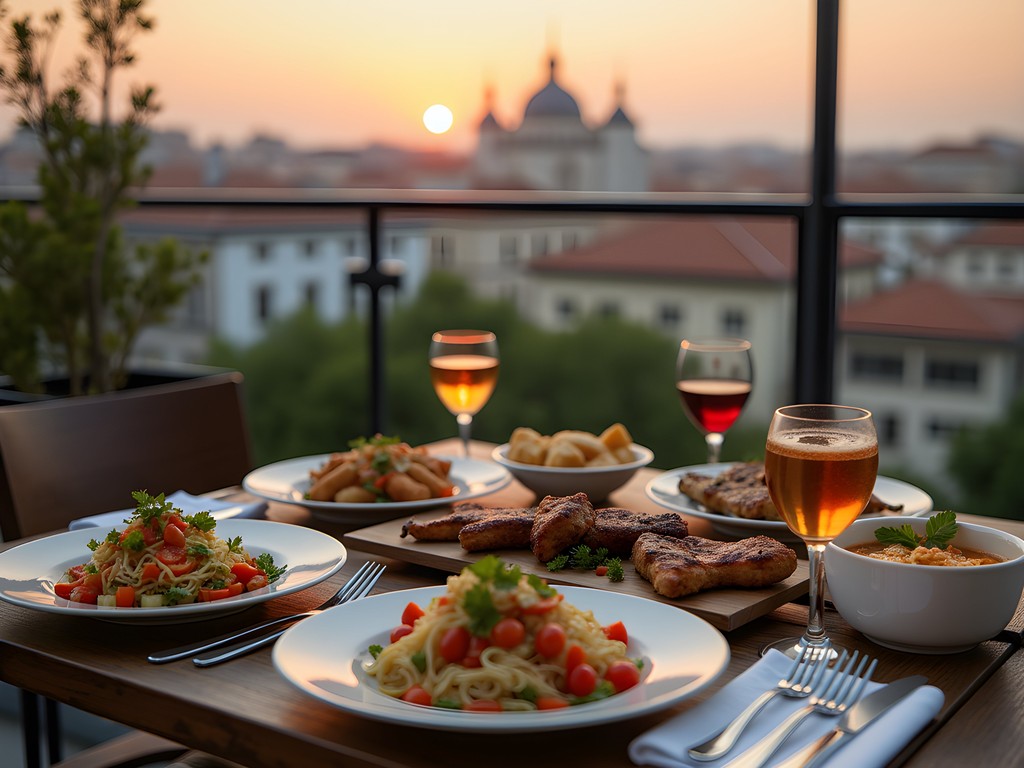
💡 Pro Tips
- Visit the Central Market Hall (Tsentralni Hali) in the morning when produce is freshest and vendors are most willing to offer samples
- Look for restaurants displaying the 'Authentic Bulgarian Cuisine' certification for genuine local flavors
- Ask for the 'dnevno menu' (daily menu) for budget-friendly lunch options at most restaurants
The Market-to-Table Experience
If hockey taught me anything, it's that understanding the fundamentals is crucial—and in Bulgarian cuisine, that means starting at the markets. Sofia's Zhenski Pazar (Women's Market) became my morning ritual, where I'd watch the day unfold amid stalls of sun-ripened produce.
The market experience here is a climate story in itself. Farmers proudly displaying their harvests explained how Bulgaria's varied topography—from mountain valleys to coastal plains—creates ideal growing conditions for everything from crisp apples to fragrant herbs. Yet many also shared concerns about increasingly unpredictable weather patterns affecting traditional growing seasons.
Armed with fresh ingredients and local knowledge, I joined a cooking class at Cooking Sofia, where I learned to make banitsa from scratch. The stretching of filo dough into paper-thin sheets requires the same patience and precision as perfecting a slap shot—something I appreciated from my hockey days.
For those wanting to recreate Bulgarian flavors at home, I found the Bulgarian yogurt maker to be an excellent investment. Bulgarian yogurt (kiselo mlyako) is world-renowned for its probiotic properties, and making it at home captures the authentic tangy flavor that commercial varieties often miss.
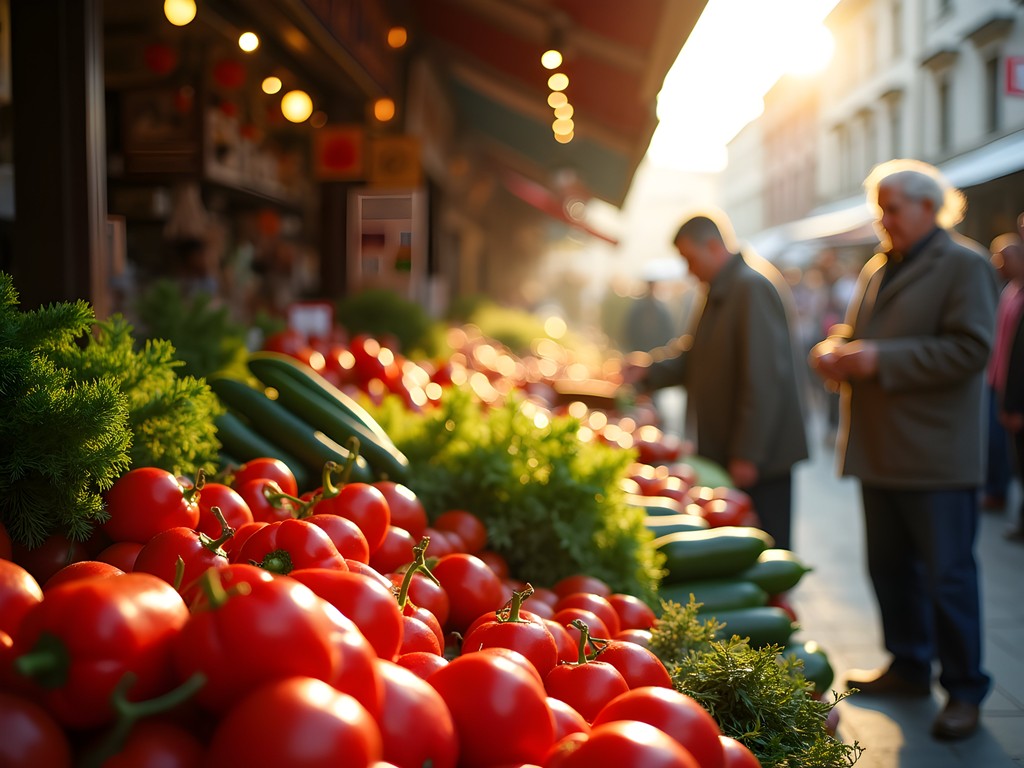
💡 Pro Tips
- Visit markets between 7-9am for the best selection and to observe locals haggling
- Look for products labeled 'БДС' (BDS) which indicates they're made according to traditional Bulgarian state standards
- When buying white brine cheese (sirene), ask for 'ovche sirene' for the sheep milk variety that's most traditional
Plovdiv: A Culinary Time Machine
A two-hour bus ride from Sofia brought me to Plovdiv, Europe's oldest continuously inhabited city and a living museum of culinary traditions. The ancient cobblestone streets of the Old Town led me to family-run taverns (mehanas) where recipes have remained unchanged for generations.
At Rahat Tepe, overlooking the city from one of Plovdiv's seven hills, I experienced the full spectrum of Bulgarian slow food. The gyuvech (clay pot stew) simmered for hours, concentrating flavors in a way that reminded me of how climate shapes cooking methods—slow cooking developed in regions where fuel was precious and summer heat needed to be preserved for winter sustenance.
What struck me most was how Plovdiv's position along ancient trade routes influenced its cuisine. The Ottoman legacy is evident in dishes like kyufte (spiced meatballs) and baklava, while Greek influences appear in the liberal use of olive oil and fresh herbs.
One evening, I joined locals at a neighborhood mehana where musicians played traditional folk songs while we dined. I couldn't help but notice parallels to hockey culture—the communal spirit, the passing down of traditions, the pride in performance. My portable wine preserver came in handy here, allowing me to sample various Bulgarian wines without committing to full bottles. Bulgaria's wine tradition dates back to Thracian times, and the country's diverse microclimates produce excellent varieties that rarely make it to international markets.
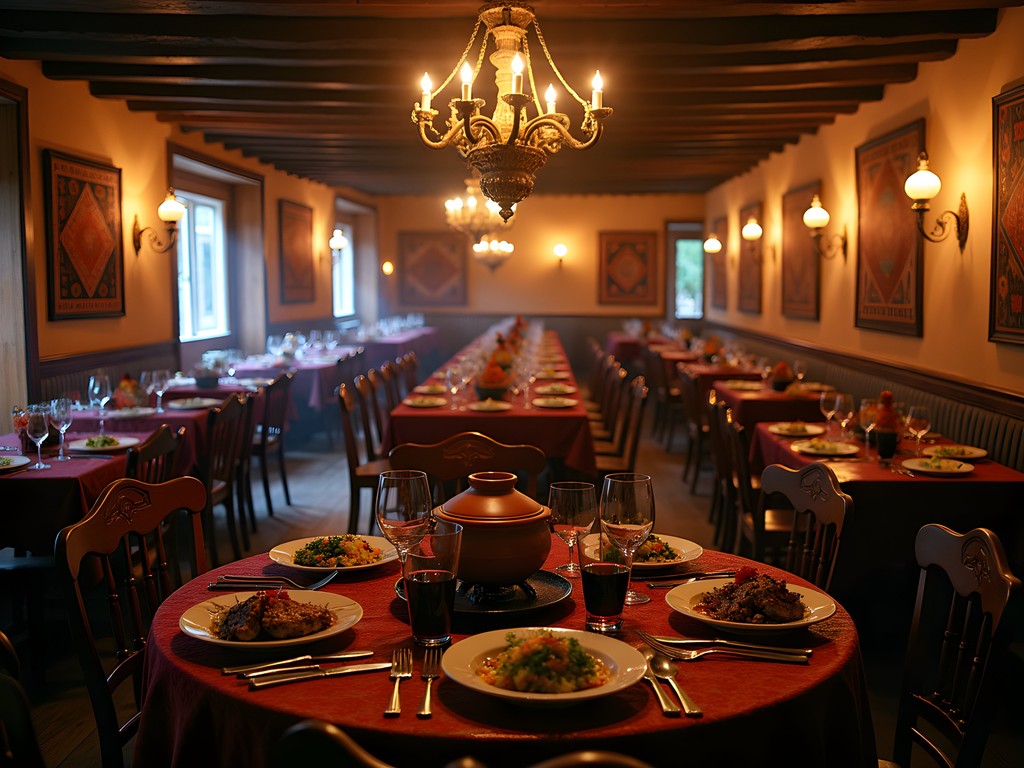
💡 Pro Tips
- Reserve a table at mehanas in advance, especially during summer when outdoor seating is in high demand
- Order 'rakiya' (fruit brandy) as an aperitif—it's considered rude to refuse this traditional welcome drink
- Look for restaurants in Kapana district for modern twists on Bulgarian classics at budget-friendly prices
Budget-Friendly Food Experiences Worth Savoring
Traveling on a mid-range budget in Bulgaria feels like having an all-access pass—the country offers remarkable value compared to Western Europe. Street food became my go-to lunch option, with banitsa shops and kebapche (grilled meat) stands providing satisfying meals for under $5.
For coffee lovers, Bulgaria offers an experience that bridges Ottoman tradition and modern café culture. In Sofia, I discovered Fabrika Daga, where baristas prepare Turkish-style coffee in hot sand—a method developed centuries ago to maintain consistent heat without electricity. This climate-adaptive technique produces a rich brew that puts my morning hockey practice caffeine fix to shame.
My most memorable budget experience was joining a local family for Sunday lunch through food experience platform. For about $25, I enjoyed a multi-course home-cooked meal featuring seasonal specialties like sarmi (stuffed vine leaves) and homemade fruit preserves called slatko—traditional ways of preserving summer's bounty that originated in response to Bulgaria's continental climate with distinct seasons.
To keep track of my culinary discoveries, I used the food journal to document ingredients, techniques, and the stories behind each dish. This proved invaluable for recreating Bulgarian flavors once I returned home.
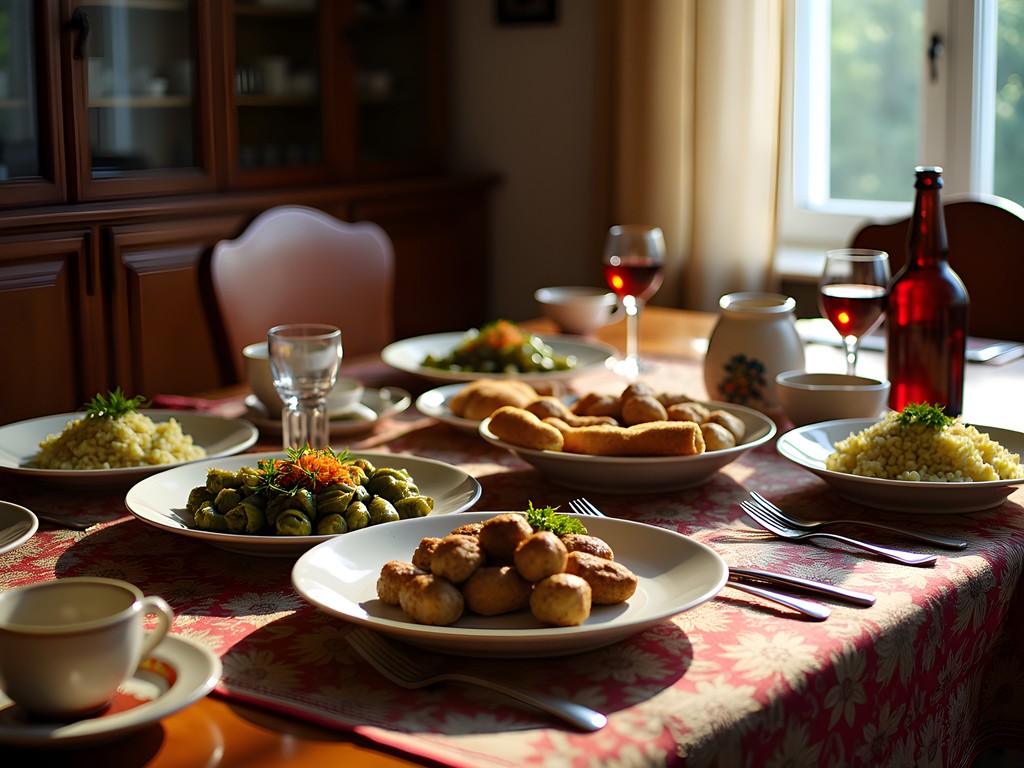
💡 Pro Tips
- Look for 'banitsa' shops for breakfast—a cheese-filled pastry that costs about $1-2 and will keep you full for hours
- Many restaurants offer 'tarator' (cold cucumber soup) complimentary during summer months
- Wine is often cheaper than bottled water in restaurants—house wine (nalivno vino) is usually excellent quality
Climate, Agriculture, and the Future of Bulgarian Cuisine
My environmental science background always draws me to explore how climate shapes food traditions. Bulgaria sits at a fascinating crossroads where Continental, Mediterranean, and Black Sea climates converge, creating diverse growing conditions within a relatively small country.
In conversations with farmers and chefs, I learned how Bulgaria's communist past paradoxically preserved many traditional agricultural practices. While Western Europe embraced industrial farming, Bulgaria's small-scale agriculture continued, resulting in produce varieties that prioritize flavor over shelf life.
However, climate change is reshaping this culinary landscape. Vintners in the Thracian Valley described shifting harvest times and experimenting with grape varieties traditionally grown further south. One winemaker compared it to a hockey team adapting tactics mid-game—you work with changing conditions rather than fighting them.
At Supa Star, a modern soup kitchen in Sofia, I met young chefs pioneering a sustainable approach to Bulgarian cuisine. Their seasonal menu changes based on what local farmers bring in, reducing food miles while supporting traditional growing methods. For travelers wanting to bring sustainable Bulgarian flavors home, I recommend the Bulgarian spice blend, which captures the essence of the region's herb-forward cooking.

💡 Pro Tips
- Look for restaurants displaying the 'Slow Food Bulgaria' logo for establishments committed to preserving traditional food practices
- Visit the Agricultural Museum in Sofia to understand how Bulgaria's farming traditions evolved with its climate
- Ask about 'babina gradina' (grandmother's garden) produce at markets—these heirloom varieties often have superior flavor
Final Thoughts
As I boarded my flight home, my taste buds still dancing with memories of sirene cheese and sun-ripened tomatoes, I reflected on how Bulgaria's culinary identity mirrors my own journey—a blend of tradition and adaptation, respect for roots while embracing change. The country's food scene exists in that perfect balance point hockey players seek—grounded yet fluid, powerful yet precise.
What makes Bulgaria truly special for culinary travelers is this authenticity that hasn't been polished away for tourist consumption. Here, food remains a living connection to history, climate, and community. Whether you're sampling street food in Sofia or breaking bread with locals in Plovdiv, you're participating in traditions shaped by centuries of climate adaptation and cultural exchange.
As climate change continues to reshape growing regions worldwide, Bulgaria's diverse microclimates and agricultural resilience offer valuable lessons. The country's culinary traditions—born from necessity and preservation—may well provide a blueprint for sustainable food systems elsewhere.
So pack your appetite and curiosity, and prepare for a culinary journey that offers tremendous value not just for your wallet, but for your understanding of how people and places adapt through food. In Bulgaria, every meal is an opportunity to taste history, climate, and culture—one delicious bite at a time.
✨ Key Takeaways
- Bulgarian cuisine offers exceptional value with most traditional meals costing under $15 even at nice restaurants
- The blend of Balkan, Mediterranean, and Slavic influences creates a unique culinary landscape worth exploring
- Local food experiences like cooking classes and home dinners provide the most authentic and memorable connections
📋 Practical Information
Best Time to Visit
Late May to early September for outdoor dining and fresh produce
Budget Estimate
$30-50/day for food (including one nicer meal)
Recommended Duration
5-7 days
Difficulty Level
Easy

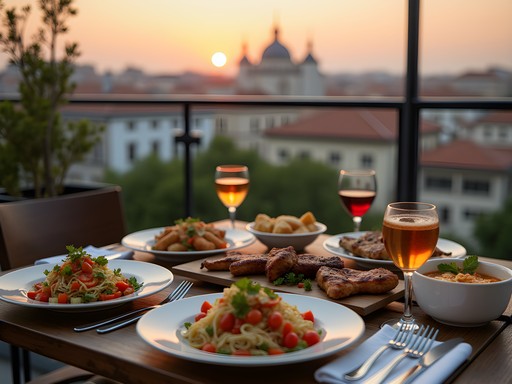
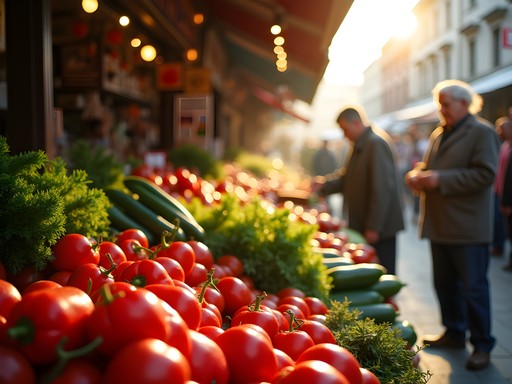
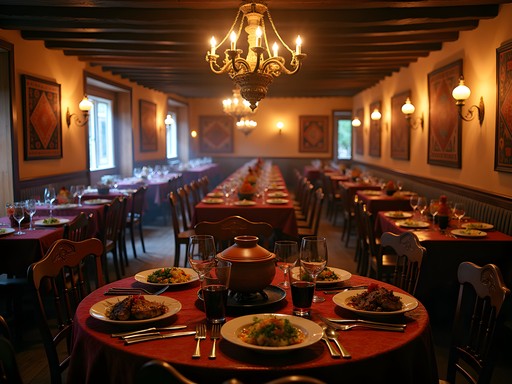
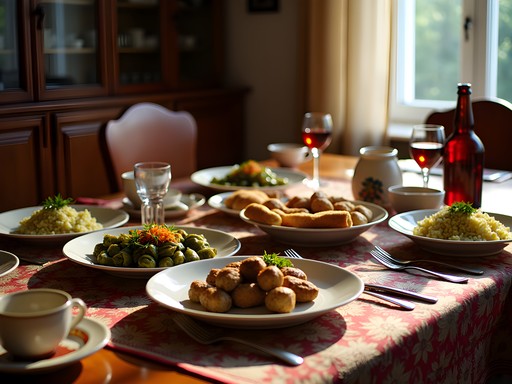
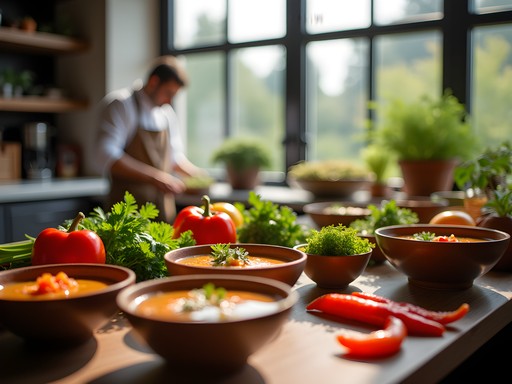






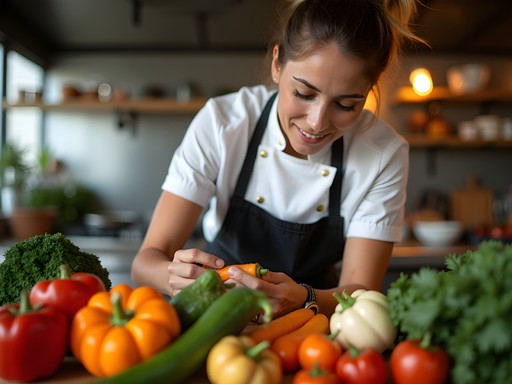

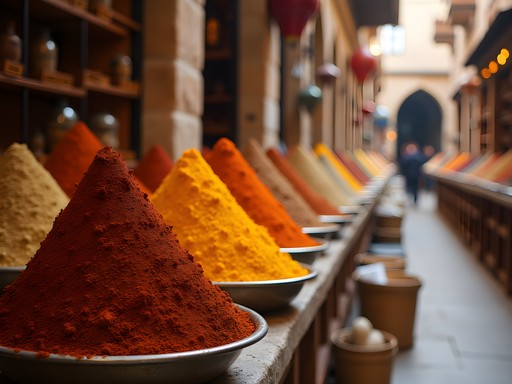
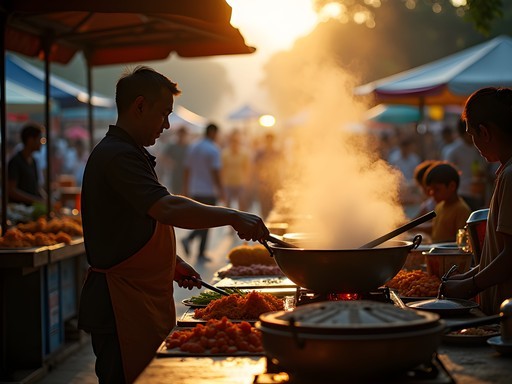
Comments
nomadmate
Heading to Bulgaria next month! Any recommendations for vegetarian options? Is it hard to eat meat-free there?
Savannah Walker
I was just there as a vegetarian! It's actually pretty easy - try tarator (cold soup), sirene po shopski (baked cheese), kyopolou (roasted eggplant dip), and lots of stuffed peppers. Most restaurants in Sofia have vegetarian options clearly marked now. The traditional restaurants outside the city can be trickier, but the shopska salad is everywhere and amazing!
nomadmate
Thanks Savannah! That's so helpful. Can't wait to try that baked cheese dish!
dreamtime
If anyone's heading to Sofia soon, don't miss the little bakeries that pop up in the morning! We grabbed fresh banitsa on our way to sightseeing each day. The one near Sofia University was our favorite - there's always a line of locals (always a good sign). Also, the street food scene around Vitosha Boulevard has really developed in the last couple years. Try the kebapche from the stands - simple grilled meat fingers that are perfect with a cold beer!
Charlotte Watkins
Skylar, your post captures the essence of Bulgarian cuisine beautifully! When we took our grandkids there last summer, they were initially skeptical of the unfamiliar foods, but by the end of the trip, my 12-year-old grandson was asking for shopska salad at every meal! The Central Market in Sofia was a highlight for us too - we did a cooking class where the chef took us shopping there first. The kids still talk about making banitsa with the local cheese. For families traveling to Bulgaria, I'd recommend the food tours in Sofia - they're surprisingly kid-friendly and a wonderful way to ease children into trying new foods in a fun environment. We used food tour guide which had special activities for the little ones.
dreamtime
Charlotte, that cooking class sounds amazing! Do you remember the name? Planning a trip with my niece and nephew.
Charlotte Watkins
It was called 'Cook Like a Bulgarian' - run by a lovely woman named Elena. Highly recommend!
springlover
Your post brought back so many memories! We spent two weeks in Bulgaria last year and the food was the highlight. That cheese-stuffed pepper dish (chushki burek) became our obsession. We found this tiny family restaurant in Sofia where the grandmother still makes everything by hand. Also, the rakija... whew! Those homemade fruit brandies pack a punch. Did anyone else notice how Bulgarians take their time with meals? Such a refreshing change from our rushed lunch breaks back home.
nomadone
Did you try tarator? That cold cucumber soup was my lifesaver during the hot Sofia summer!
Skylar Gutierrez
Absolutely! Tarator was my go-to lunch on those scorching days. So refreshing with all that dill and yogurt!
nomadone
Right? I actually got a recipe from a local grandma and make it at home now!
wanderbackpacker7664
That banitsa looks incredible! I'm still dreaming about it months after my trip.
Timothy Jenkins
Brilliant write-up on Bulgarian food! I spent three weeks exploring Bulgaria's culinary scene last spring and was constantly surprised. One thing I'd add - don't miss trying the different varieties of lutenitsa (that pepper-tomato spread). Every family seems to have their own recipe! I brought home three jars and use it on everything now. For anyone heading to Sofia, I'd recommend taking one of the free food walking tours - they're actually quite good and not overly commercial. I used this food guide which had some excellent off-the-beaten-path recommendations. The section on rakija (fruit brandy) varieties saved me from many embarrassing moments when locals offered drinks!
skyking
Oh man, that rakija! I had no idea it was so strong until after my second glass. Learned that lesson quick! 😂
starone
Those photos of the katak with bread made me so hungry! Yum!
smartlegend
Going to Sofia next month! Any specific restaurants you'd recommend that aren't too touristy?
Timothy Jenkins
Not the author but I was in Sofia earlier this year. Try Made in Home for modern Bulgarian cuisine - it's popular with locals but still accessible. For traditional food, Hadjidraganovite Kashti (Hadji Draganov Houses) is touristy but genuinely good. My top tip: visit the Central Market Hall and try different things from the food stalls on the lower level. The little old ladies selling homemade banitsa and mekitsi (fried dough) know what they're doing!
smartlegend
Thanks! Adding these to my list right now!
skyking
Just got back from Sofia last month and this post brings back so many memories! That banitsa for breakfast was life-changing - I still dream about it! We stumbled upon this tiny bakery near our hotel that had the freshest one I've ever tasted. Did you try the shopska salad? I couldn't get enough of that simple combo of tomatoes, cucumbers and that crumbly white cheese. Wish I could transport myself back there right now!
starone
That shopska salad is AMAZING right? So simple but so perfect!
skyking
Totally! I've tried making it at home but can't find cheese that tastes the same as their sirene. Not even close!
Venture X
Premium card with 2X miles, $300 travel credit, Priority Pass